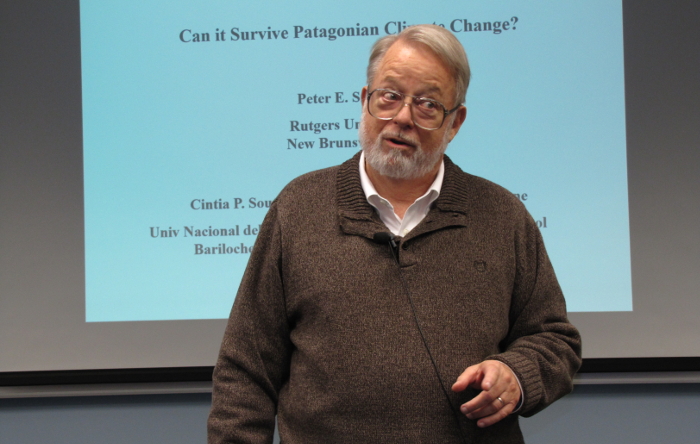NIMBioS Seminar Series
In conjunction with the interdisciplinary activities of the National Institute for Mathematical and Biological Synthesis (NIMBioS), a seminar series on topics in mathematical biology will be hosted at NIMBioS every other Tuesday at 3:30 p.m. (unless otherwise noted) in the Hallam Auditorium, Room 206, Claxton Building, 1122 Volunteer Blvd. Seminar speakers will focus on their research initiatives at the interface of mathematics and many areas of the life sciences. Light refreshments will be served in Room 205 beginning 30 minutes before each talk. Faculty and students from across the UT community are welcome to join us.
Time/Date: Tuesday, October 7, 2014, 3:30 p.m.*
Location:
Room 206, Claxton Building, 1122 Volunteer Blvd.
Speaker:
Dr. Peter Smouse, Ecology, Rutgers University; NIMBioS Postdoctoral Fellows Invited Distinguished Visitor
Topic:
Correlated Biotic and Abiotic Patterns in Embothrium coccineum: Can Embothrium Survive Patagonian Climate Change?
Abstract:
Adaptive radiation and reproductive isolation can determine the biogeographic structure of any species. Embothrium coccineum (Proteaceae) is a South American tree species that dates to the Oligocene, and now spans 200 of latitude and 1500m of elevation on both slopes of the Andes. It is both morphologically and genetically highly variable, as is typical of species spanning such vast geographical regions in both hemispheres. We have deployed hyper-dimensional PCA and CCA methods to explore the correspondence between biotic pattern and current geographic and climatic gradients for 34 populations (934 individuals). Smaller, rounder leaves and particular alleles typify the colder-drier parts of the range, while larger, lanceolate leaves and alternative alleles typify warmer-moister areas. The climate of South America is changing, so we "forward mapped" those patterns onto a future climatic landscape, based on a projected doubling of CO2 for South America. Our analytic approach can be extended to analysis of biotic/abiotic co- patterns in other species facing climatic challenge. Species with sufficient geographic and adaptive substrate, and with sufficient dispersal potential, should be able to "keep up" with the pace of spatial climatic shift. The tolerable climatic regime Embotthrium will clearly shift a bit geographically, but this lineage has survived repeated and dramatic climatic shifts since the Oligocene, and it should also be able to move and adapt quickly enough to meet the present challenge. On balance, it seems clear that Embothrium is here to stay.
*Join us for refreshments at 3 p.m. in Room 205.
Seminar Flyer (pdf)
NIMBioS seminars are available for viewing via live streaming during the talk and are archived for later viewing on NIMBioS' YouTube channel.
For more information about this and other NIMBioS Seminars, visit /seminars.

NIMBioS
1122 Volunteer Blvd., Suite 106
University of Tennessee
Knoxville,
TN 37996-3410
PH: (865) 974-9334
FAX: (865) 974-9461
Contact NIMBioS



